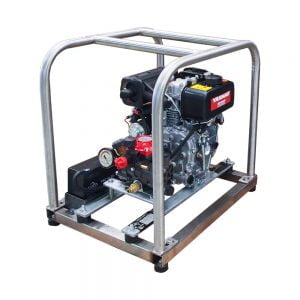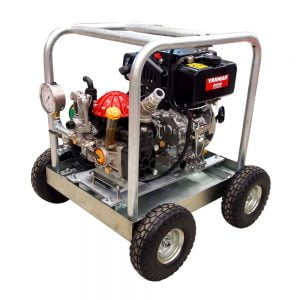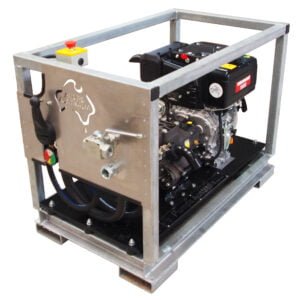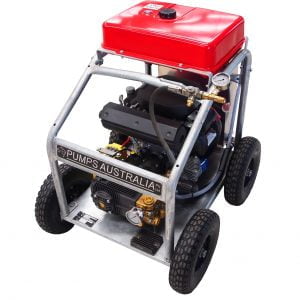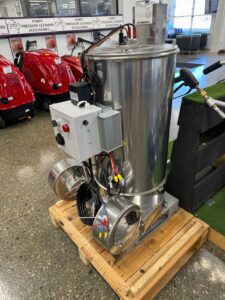What is hydrostatic pressure testing?
A hydrostatic test is when you use a hydrostatic pump and apply pressure to a vessel to verify the integrity of the system. This can determine the maximum pressure of the system, the safety margin of the vessel as well as the overall performance of the component. Hydrostatic testing clarifies the capabilities of the component, ensuring the system is in working order.

Functional Pressure Test
A hydrostatic functional pressure test, assesses the maximum working/operating pressure. This copies the way the user would typically operate the equipment, offering confidence in the system.
Proof Pressure Test
All systems, valves and vessels should be designed with a safety margin. Nothing should be just on the edge of failing. If it is, it’s poorly designed equipment and will result in damages.
To evaluate the effectiveness of the safety margin conduct proof pressure testing.
Proof pressure testing considers the maximum pressure plus the safety margin. This involves adding extra pressure to the maximum pressure, making sure the safety margin is effective.
Burst Pressure Testing
Hydrostatic burst testing involves raising the pressure until the point of failure, often resulting in the vessel bursting. Of course, this means the system is destroyed in the process so it should only be done for jobs that can sacrifice the vessel.
Fatigue Pressure Testing
This involves testing the endurance of your vessel and at what point the system fatigues from use.
Who uses hydrostatic testers?
Hydrostatic tests are often performed by licensed plumbers who are conducting pipeline testing, assessing pressure vessels or doing residential or commercial inspections to the water pressure system. It’s the only way to assess the performance of a valve, and determine whether any pressure has been lost.

How to do a hydrostatic test
For a functional pressure test, one of the ways to assess the pressure is connecting a High Pressure Pump (Powered by Petrol, Diesel or Electric) to the system and then pumping up to the maximum pressure. The maximum pressure will be recorded on the pressure gauge.
When testing your equipment, you can expect your system to perform with no leaks at high and low pressures. Check your system performance at both the highest and lowest pressures. You might find no damage at high pressure yet, problems at low pressure.
For proof pressure testing, pump up the system beyond the maximum pressure. Check for any leaks or damages. The test must maintain the pressure for at least 30-40mins, If there are no bursts or failures you’ll then know the safety margin is functioning appropriately.
For hydrostatic burst pressure testing, make sure the component/system is in a burst protection chamber or behind a screen. As the vessel will inevitably (and unexpectedly) burst, it’s essential you clear the area and ensure both you and your environment are safe from the liquid when it escapes. The burst will be sudden, so make sure you’re prepared prior to beginning the test. Record the pressure at which the vessel bursts and here you’ll know the maximum pressure of the vessel (safety margin included).
For hydrostatic fatigue testing, you take the system up to maximum pressure and down until the system fatigues. This can be a timely process and can be the most complicated depending on the system.
When conducting your hydrostatic test, it’s best to use water mixed with a corrosion inhibitor as it’s both easily available as well as harmless to the system. If the valve fails, the liquid will only release a small amount rather than flowing out everywhere.
Have a question?
For more information on hydrostatic testers, contact our team with your questions. Talk with our team to discuss our pressure testing solutions. Or, explore our hydrostatic testers here.

